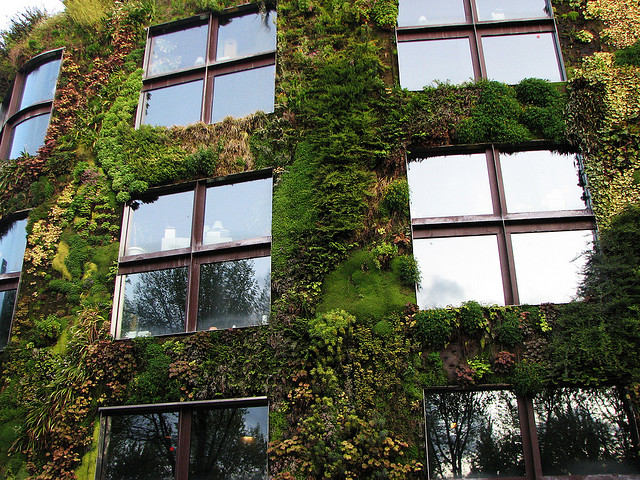Code Green Solutions


Vegetation on our streets, including trees, plants and green walls, could reduce nitrogen dioxide and particulate matter in the air, dramatically improving air quality, according to a study from researchers at Lancaster University in the United Kingdom. Effectiveness of Green Infrastructure for Improvement of Air Quality in Urban Street Canyons builds on other studies of the effect of vegetation on urban air quality. The study considers the impact of the built environment, namely the urban canyon effect, on air quality in city centers. An urban canyon is much like a natural canyon, except that it is formed of densely spaced skyscrapers and other buildings. Such canyons can cause pollutants to be trapped by surrounding buildings, limiting dispersion into the atmosphere.
While other studies have suggested that improvements in air quality of less then 5% can be made by introducing more vegetation, this study suggests that reductions of 40% for nitrogen dioxide and 60% for particulate matter are possible. This is largely because of the length of time air remains in urban canyons, which allows pollutant-scrubbing vegetation to interact with that air for longer. However, this model has yet to be thoroughly verified by data from streets with vegetation causing some to question if potential air quality improvements are overstated.

An illustration of the street canyon effect. From: Effectiveness of Green Infrastructure for Improvement of Air Quality in Urban Street Canyons
If the model does hold up, then cities may look into increasing vegetation and green walls, or perhaps even green billboards, as suggested by the researchers. Doing so would come with additional benefits such as reduced surface temperatures and noise pollution, and increased biodiversity. Such vegetation, authors suggest, may even ensure cleaner air in urban canyons than surrounding rural areas where pollutants with long lifetimes often accumulate.